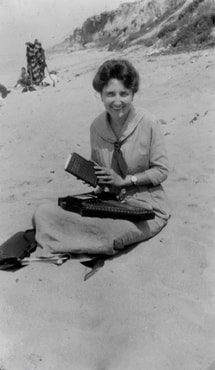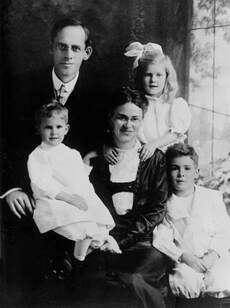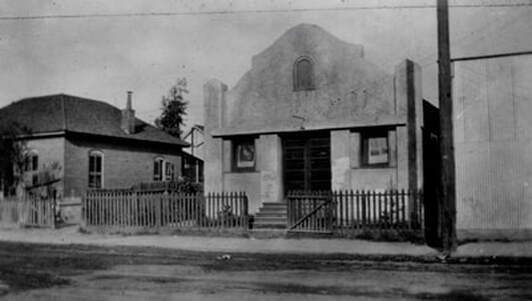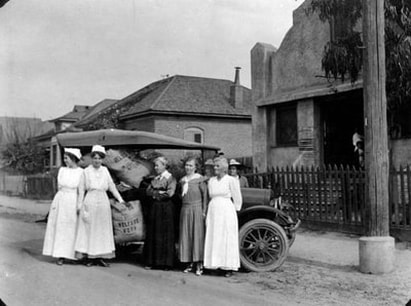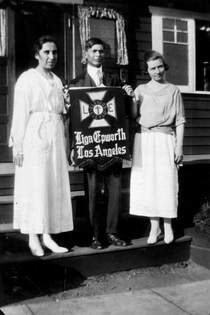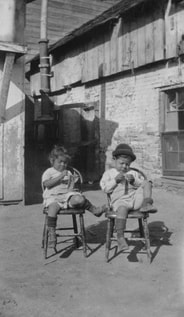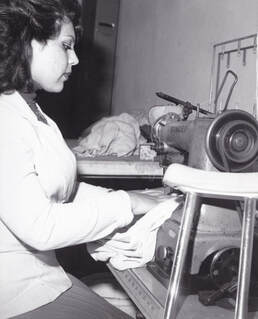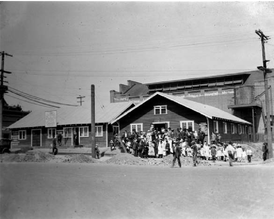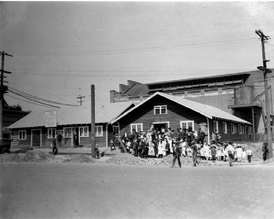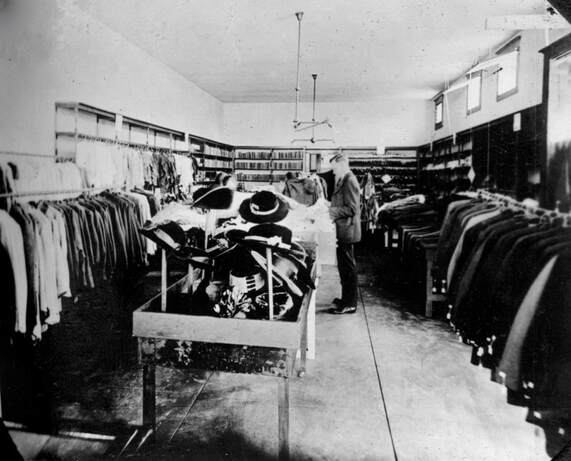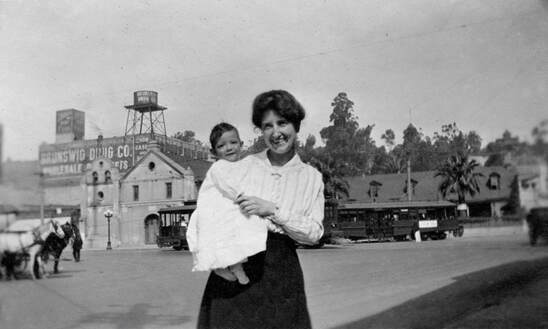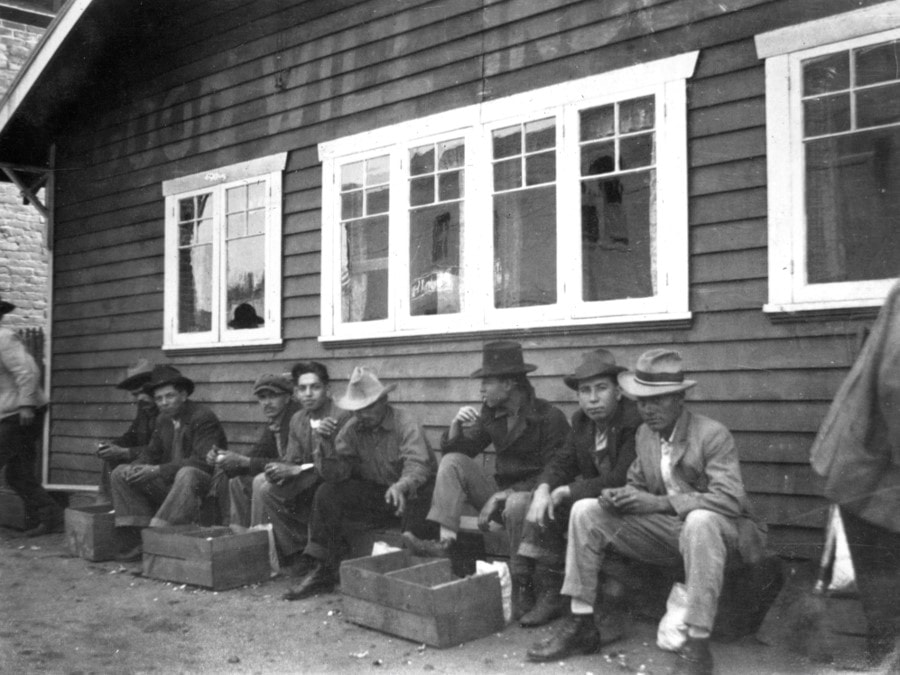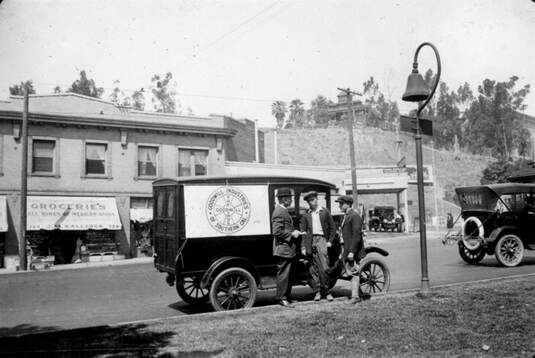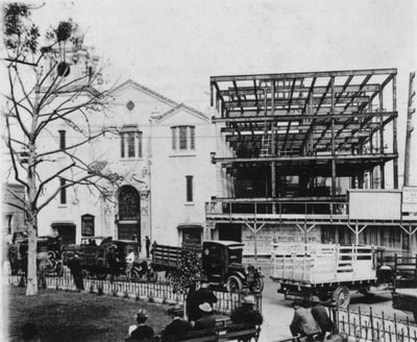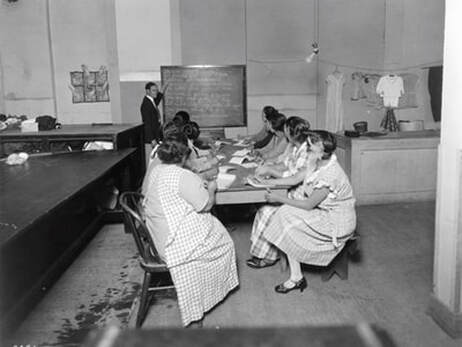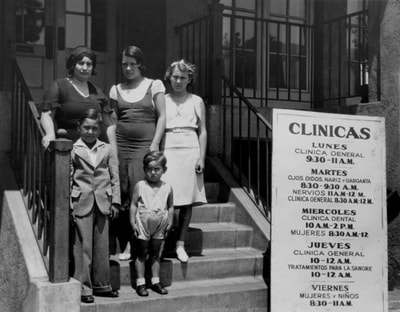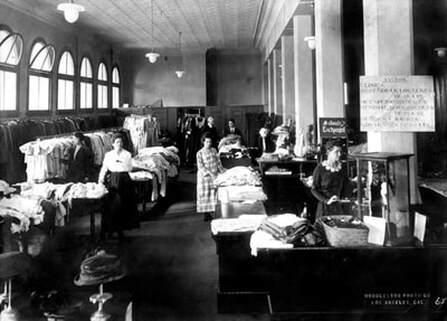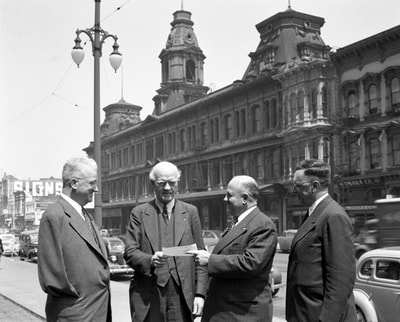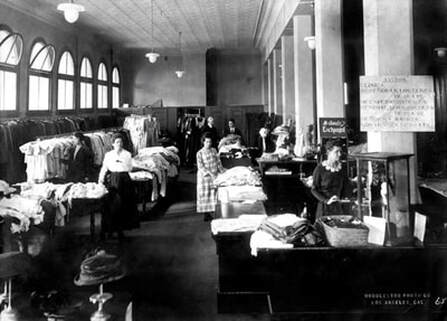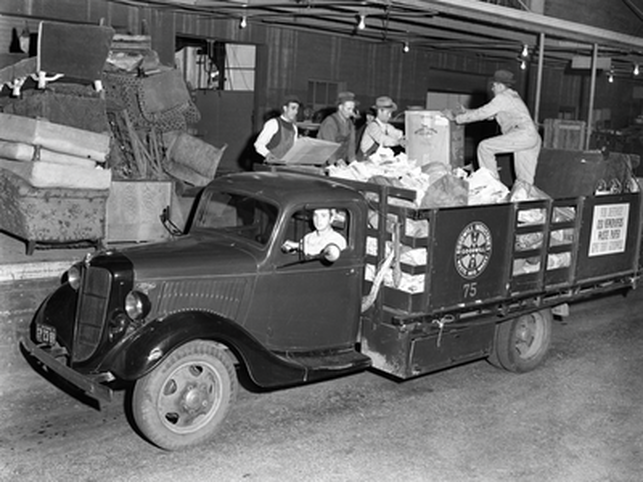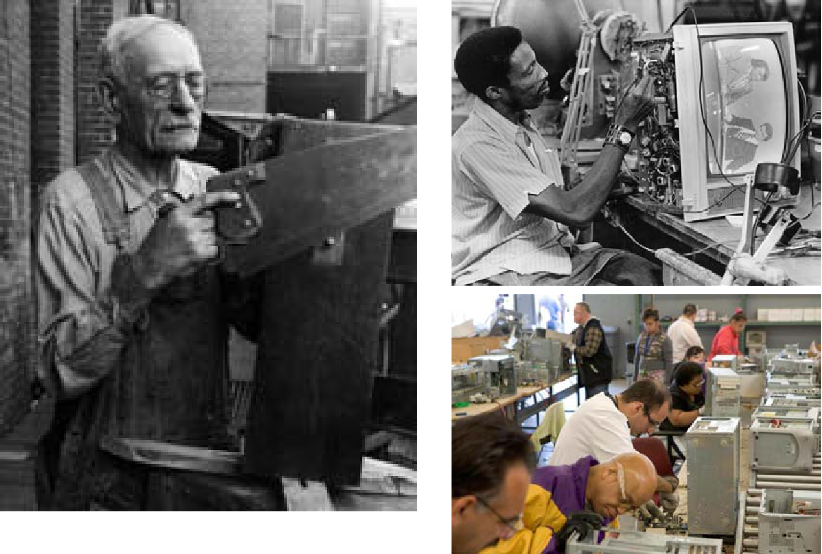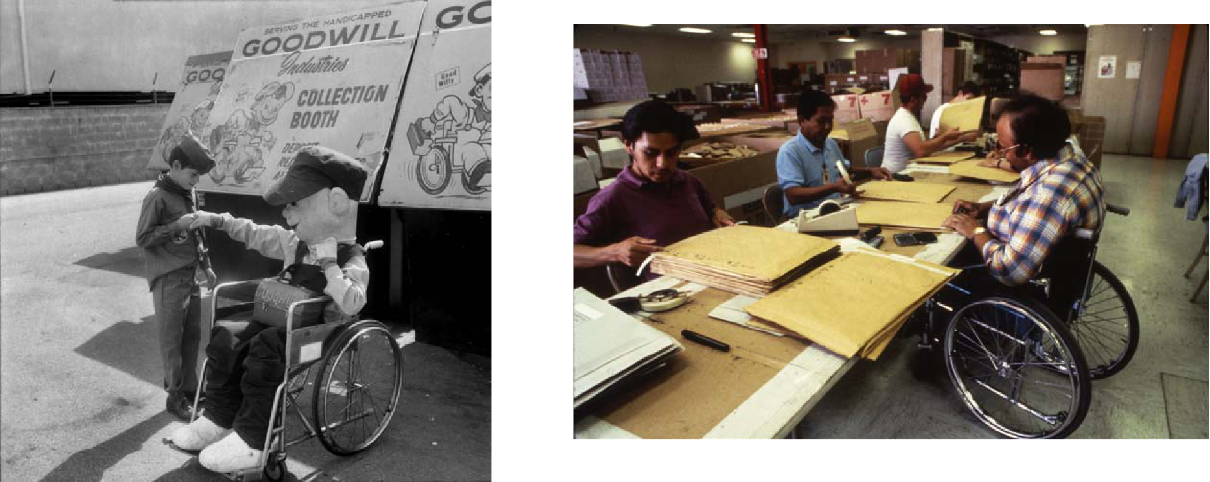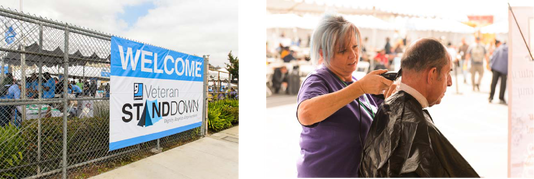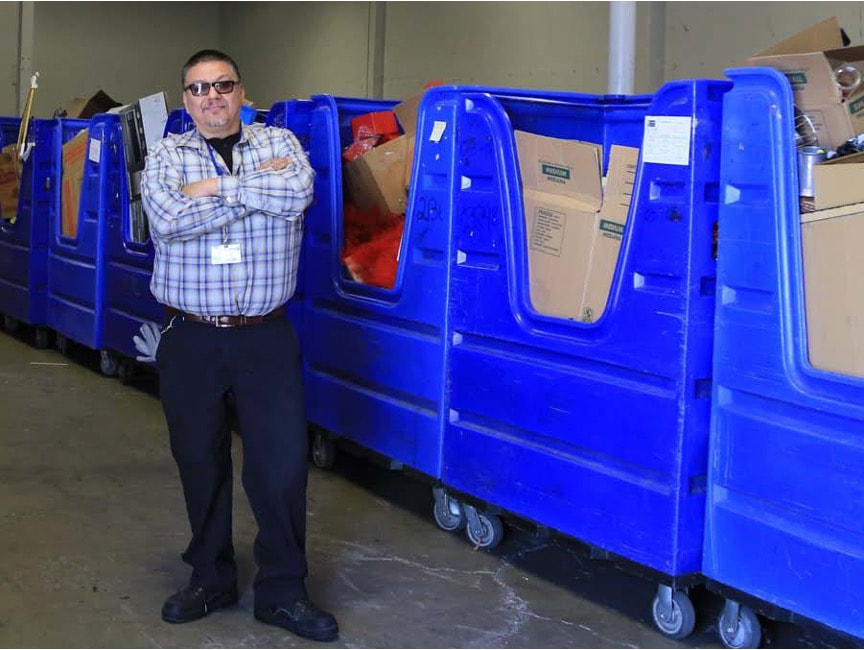GOODWILL: ITS FOUNDING AND HISTORY IN SOUTHERN CALIFORNIA
JUNE 6–JULY 28, 2019
AUGUST 4TH, 2016–JANUARY 14TH, 2017
Celebrating 100 years, the foundation of Goodwill Southern California was established in El Pueblo de Los Angeles in 1916 by Katherine B. Higgins, the first woman to establish a Goodwill. Higgins was a pivotal figure in providing social services in Los Angeles and developing the La Plaza United Methodist Church. Goodwill adopted the philosophy “Not Charity, but a Chance” furthering the original mission of Dr. Edgar J. Helms, who founded the national Goodwill organization in 1902. Higgins and the clergy of the Methodist Church opened the first store on the Plaza in 1918, offering discounted clothing and household goods. In conjunction with the Plaza Community Center, Goodwill provided employment and job training, welfare services and a health clinic to Latin Americans and other immigrants living and arriving in Los Angeles.
|
Katherine B. Higgins (1880-1967) was the youngest of five children born in Bilston, England. After her father died in 1882, the family immigrated to Pittsburg, Pennsylvania. Later, the family moved to Elwood, Indiana where she attended the Central Business College in nearby Indianapolis. While in Indiana Katherine joined the Methodist Episcopal Church and decided to dedicate her life to the “Master for His service.” She successfully launched a girl's club, a boy's club, and a Woman’s Missionary Society. Katherine went to Chicago, where social work pioneer Jane Adams launched the Hull House settlement house, to learn about providing social services. Katherine is fondly nicknamed "Miss Goodwill,” "Mother of Goodwill" and the “Angel of the Plaza” for her social work. |
|
Dr. Vernon McCombs, Superintendent of the Latin American Missions, announced a need to have young women to perform welfare work among the 100,000 Latin Americans in Los Angeles. A teacher, Medora Hood, informed Dr. McCombs about her friend, Katherine Higgins. Kathrine accepted Dr. McCombs invitation to come to Los Angeles to work with the Methodist Church. Katherine declined an offer for a high paying position in the new Settlement House in Pittsburgh with the H. J. Heinz Company in order to come out West without a salary. Members of the South Pasadena Men's Class gave $15 a month toward Katherine's first salary. |
In May 1915 Katherine’s work began in the building on Bloom St. (less than a mile away from the Plaza) that was used as the first welfare center and medical clinic for the Plaza Community Center. To finance the clinic, in 1916, Katherine purchased 200 used coffee sacks and created the first Opportunity Bags. The bags were placed in the homes of anyone who wanted to donate items they did not need or want in order to give others the opportunity to buy them at nominal prices.
|
The Epworth League (a Methodist Association for young adults) was instrumental in helping to place the Opportunity bags in the homes of donors. Epworth League members transported filled sacks and took them to Bloom St. Katherine used the Epworth League emblem, a Maltese Cross, as the official insignia.
|
Mother Higgins, Katherine’s mother, started the Mother's Sewing Class. She taught Mexican mothers and other women how to make clothes out of the Opportunity Bags. Children were taught how to make new sheets and pillows out of older ones donated in the bags.
|
|
Katherine and her mother devoted themselves to the Plaza Community Center’s social services and Goodwill. Katherine retired in 1949 but continued to speak at churches across the nation until her death in 1967.
|
In May 1916 Katherine and the Methodist Board of Latin American Missions negotiated for the site on the Plaza where La Plaza United Methodist Church stands today. Two wooden portable buildings built in 1917 contained the Plaza Mexican Methodist Church and the Plaza Goodwill Store, which offered medical, dental, employment, and general welfare services. The back lot was used for a day nursery and kindergarten.
|
On March 9, 1918 the first Goodwill Store opened in one of the portable buildings in the Plaza Community Center on Marchessault St., presently the southern end of Olvera Street on the Plaza. During a time when the City’s facilities were segregated the water fountain, in the background, was a symbol of “brotherhood” where anyone of any race could freely drink.
|
Repairing and selling donated items funded the activities, programs and social services provided by Goodwill. Today, the services and programs are funded by retail sales, business contracts including e-Recycling and document shredding, government grants and contacts, and private philanthropy.
|
Virginia's mother was sent to the Plaza Community Center for care, two weeks after giving birth to Virginia on the train from Mexico. Katherine and others brought them to the clinic for medical attention and promised the mother a job mending clothes in the Goodwill Industries. Virginia was the first child put in the Day Nursery and her mother "headed the list as the first employee at the Goodwill Industries.”
|
|
Activities in the buildings included:
Social Club for men (to provide a moral place for men to gather instead of at bars or in gambling halls), Medical and dental clinic (5 cents per treatment), Boys’ Club for Italians, Mexicans, and Austrians, Girls’ and Boys’ Health Club, Girls’ Sewing Club, Employment Office, Goodwill Industries and Store |
In 1919 Goodwill acquired their first Ford truck to transport Opportunity Bags. In April 1919 Goodwill Southern California (GWSC) was organized under the Bureau of Goodwill Industries of the Department of Cities of the Board of Home Missions and Church Extension. GWSC separated from the Latin American Mission in 1921 to become more secular and place a greater effort in reaching all denominations, classes and races.
|
|
Construction progress of the current La Plaza United Methodist Church building to replace the two temporary wooden portable buildings. Construction began in 1925 and the portable buildings were moved to New High St. The Church was completed in 1926 and the Plaza Community Center in 1927.
|
In 1916 Mother Higgins taught English classes that continued into the 1930s at Goodwill Centers in Southern California.
|
In 1927 the health clinic was moved from Bloom St. to the newly constructed building on the Plaza. When Goodwill opened in 1918 Katherine managed the Welfare Department that included the medical and dental clinic, while the Industrial Department was under the direction of Mr. S. M. Wellwood, who previously worked in San Francisco and on the staff of Morgan Memorial in Boston.
In 1920 three more Goodwill Stores opened. The first opened in the Munger Block at 342 N. Main St. in Los Angeles; the second on Fair Oaks Ave. in Pasadena and the third at E. 7th St. in Los Angeles. In 1938 the present-day headquarters opened on San Fernando Rd. and in 1940 the largest store opened at 231-‐235 S. Broadway St., both in Los Angeles.
|
“For Defense, Old Newspapers, Waste Paper, Give thru Goodwill,” Goodwill’s “Salvage for Defense” campaign during World War II, 1941.
Over 24 million pounds of paper, iron, rags, rubber, and glass were collected for the war campaign through dona8ons made to Goodwill. |
Goodwill continues to provide job training and employment, changing its programs and services as technology advances. In the beginning, items were repaired and sold in the discount stores, today computers and other electronics are dismantled for recycling.
|
|
Good Willy, the Goodwill mascot, was created in the 1950s when Goodwill increased its services to individuals with disabilities, providing employment, job training, and rehabilitation work. Today, Goodwill offers comprehensive services for people with disabili8es that include counseling and job placement.
|
Held at Goodwill Headquarters, the event involved over three-dozen community partners. Goodwill SouthernCalifornia provided a variety of free services for over 300 veterans and their families, including meals, clothing, health screenings, VA and Social Security benefits counseling, and referrals to other services such as housing, employment, and substance abuse treatment.
|
|
In 1959 the first yellow and blue donation bins were erected in front of the Los Angeles facility on San Fernando Rd. By 1970 over 900 bins were located in supermarket parking lots. The placement of bins in parking lots of shopping centers made donating items easy and convenient. Today Goodwill has over 40 Attended Donation Centers, continuing to provide an easy method of donating items.
|
Job fairs showcase Goodwill’s large network of businesses and community partners. Attendees are provided with numerous career development and placement services. In 2015 Goodwill Southern California assisted 45,000 individuals who attended the Job Fair.
|

